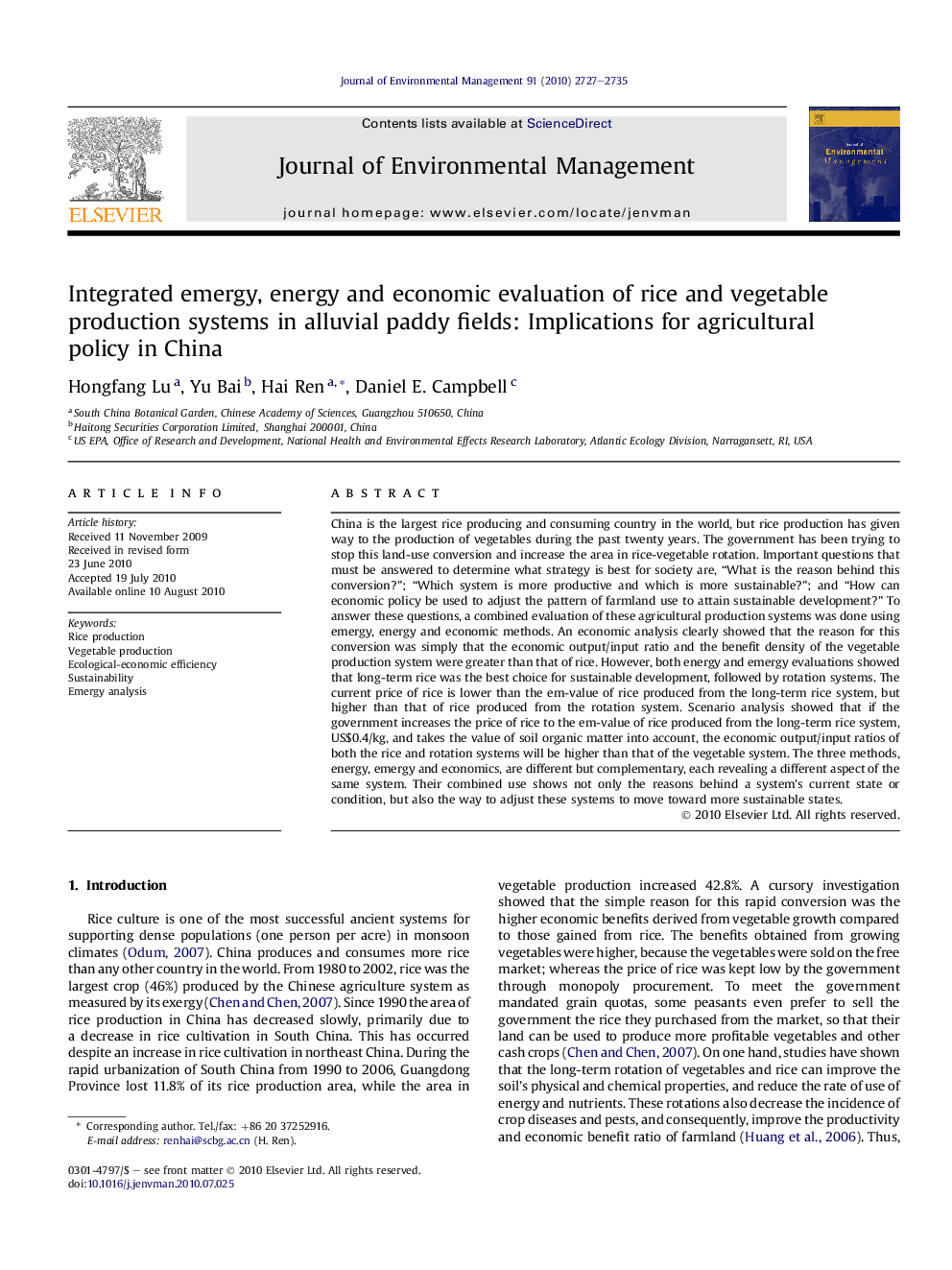| کد مقاله | کد نشریه | سال انتشار | مقاله انگلیسی | نسخه تمام متن |
|---|---|---|---|---|
| 1057582 | 947081 | 2010 | 9 صفحه PDF | دانلود رایگان |

China is the largest rice producing and consuming country in the world, but rice production has given way to the production of vegetables during the past twenty years. The government has been trying to stop this land-use conversion and increase the area in rice-vegetable rotation. Important questions that must be answered to determine what strategy is best for society are, “What is the reason behind this conversion?”; “Which system is more productive and which is more sustainable?”; and “How can economic policy be used to adjust the pattern of farmland use to attain sustainable development?” To answer these questions, a combined evaluation of these agricultural production systems was done using emergy, energy and economic methods. An economic analysis clearly showed that the reason for this conversion was simply that the economic output/input ratio and the benefit density of the vegetable production system were greater than that of rice. However, both energy and emergy evaluations showed that long-term rice was the best choice for sustainable development, followed by rotation systems. The current price of rice is lower than the em-value of rice produced from the long-term rice system, but higher than that of rice produced from the rotation system. Scenario analysis showed that if the government increases the price of rice to the em-value of rice produced from the long-term rice system, US$0.4/kg, and takes the value of soil organic matter into account, the economic output/input ratios of both the rice and rotation systems will be higher than that of the vegetable system. The three methods, energy, emergy and economics, are different but complementary, each revealing a different aspect of the same system. Their combined use shows not only the reasons behind a system’s current state or condition, but also the way to adjust these systems to move toward more sustainable states.
Journal: Journal of Environmental Management - Volume 91, Issue 12, December 2010, Pages 2727–2735